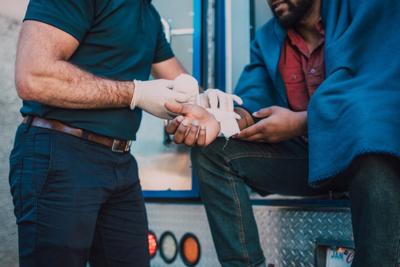
Dog bite injuries can happen without warning and can result in substantial physical and emotional distress. These incidents, ranging from minor scratches to severe punctures or lacerations, are more frequent than one might think. Understanding how to appropriately manage and treat these injuries is crucial, but it's also important to acknowledge the broader impacts they can have on a person's life.
Having seen numerous cases, the best personal injury lawyer in Tucson can attest to the extensive effects a dog bite can have. In this article, we will go over some of the things you should do to make sure that you are able to recover from a dog bite.
Assess How Severe the Bite Is
A dog bite can range from a minor scratch to a gaping wound, so the first crucial step in managing a dog bite is to assess its severity.
Minor bites typically manifest as superficial scratches or small punctures that have not deeply penetrated the skin. These wounds might bleed a little, but the bleeding can generally be controlled quite easily.
Serious bites are characterized by deep punctures, tears, or multiple bites. They often involve heavy bleeding and might expose underlying tissues, muscles, or bones. The victim will also be in considerable pain and distress.
For any injury, it is also important to consider the size, breed, and known health status of the dog as these factors can influence the potential for complications.
Initial Care
Dealing with minor dog bites promptly and correctly can reduce the risk of infection and speed up the healing process.
Once you or the person you witnessed get bit has calmed down, clean the wound using mild soap and warm water. This should be done gently to remove any dirt or saliva from the wound which can cause infection. Rinse the area thoroughly for a few minutes.
Once the wound has been cleaned and disinfected, apply a clean, dry bandage or dressing. This helps to protect the wound from further contamination and aids in the healing process. Make sure not to wrap the bandage too tightly as this can restrict blood flow.
After administering first aid, it's important to watch out for signs of infection, which may include increased pain, redness, swelling, pus drainage, or a fever. If any of these signs are noticed, seek medical attention immediately.
Aftercare
Once the initial treatment is complete, whether at home or by a healthcare professional, the subsequent aftercare is vital for optimal healing and recovery.
If a bandage was applied to the wound, it should be changed regularly - usually once a day or whenever it becomes wet or dirty. Before reapplying a new bandage, gently clean the wound with warm water and mild soap, then pat dry.
If a healthcare provider prescribed any medications, such as antibiotics to prevent or treat an infection, it's essential to take the entire course as directed, even if symptoms improve before the medication is finished. Stopping antibiotics prematurely can lead to a rebound infection that may be more resistant to treatment.
Here are Some Other Articles Related to Your Search:
Dog Bites: What To Do When You’re Bitten by a Dog
7 Helpful Tips for Hiring a Personal Injury Lawyer for Your Case
Excellent Skills To Look For When Hiring A Lawyer For Your Personal Injury Case



(0) comments
We welcome your comments
Log In
Post a comment as Guest
Keep it Clean. Please avoid obscene, vulgar, lewd, racist or sexually-oriented language.
PLEASE TURN OFF YOUR CAPS LOCK.
Don't Threaten. Threats of harming another person will not be tolerated.
Be Truthful. Don't knowingly lie about anyone or anything.
Be Nice. No racism, sexism or any sort of -ism that is degrading to another person.
Be Proactive. Use the 'Report' link on each comment to let us know of abusive posts.
Share with Us. We'd love to hear eyewitness accounts, the history behind an article.